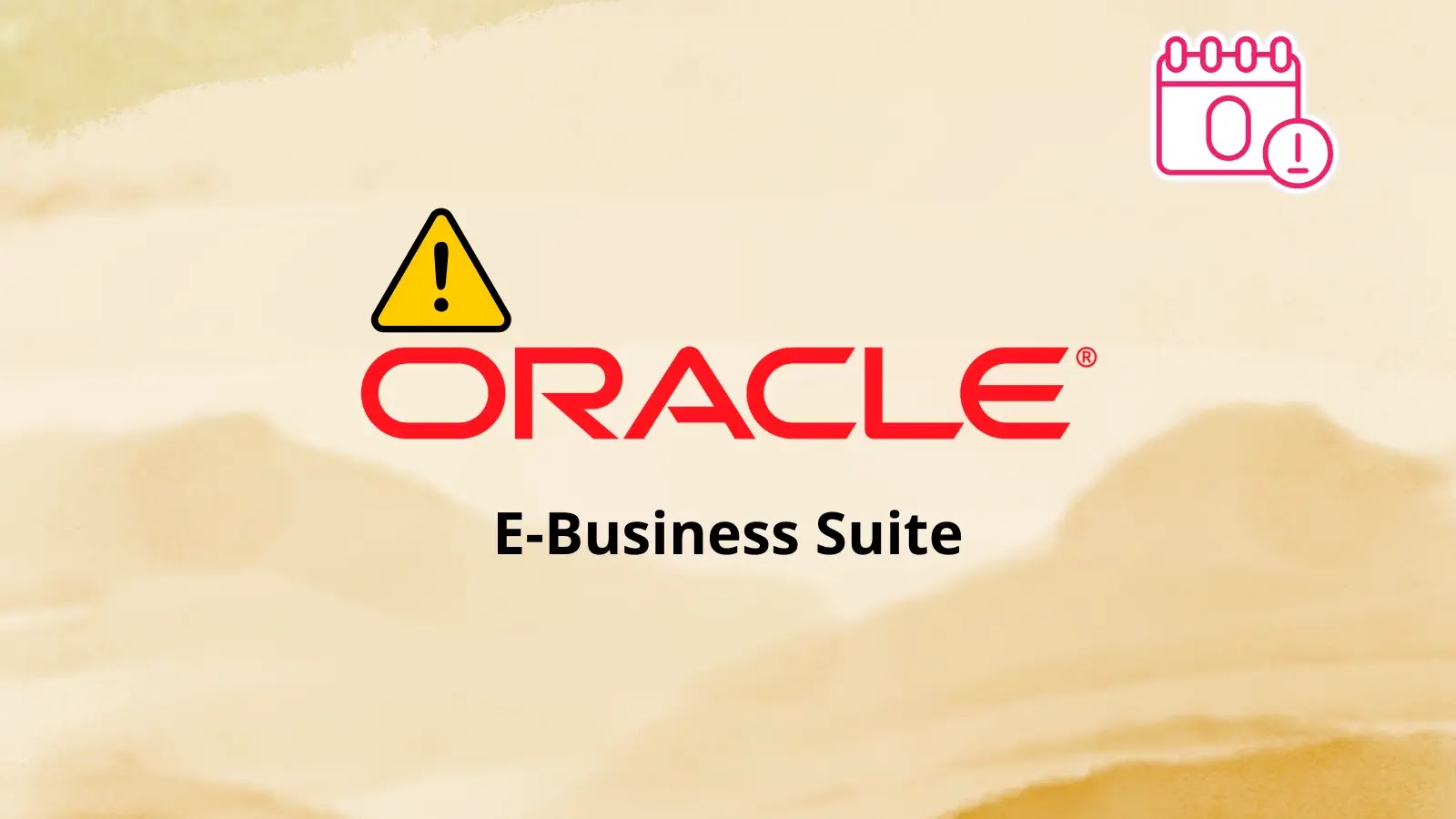
CrowdStrike Warns of New Mass Exploitation Campaign Leveraging Oracle E-Business Suite 0-Day
Urgent Warning: CrowdStrike Uncovers Mass Exploitation of Oracle E-Business Suite 0-Day
A new, deeply concerning threat is casting a shadow over organizations relying on Oracle E-Business Suite (EBS). Cybersecurity leader CrowdStrike has issued a critical alert regarding a widespread mass exploitation campaign actively leveraging a novel zero-day vulnerability in these essential enterprise applications. This unauthenticated remote code execution (RCE) flaw, now officially tracked as CVE-2025-61882, presents an immediate and severe risk to countless businesses globally. If your organization uses Oracle EBS, understanding and addressing this vulnerability is paramount to safeguarding your critical data and operations.
The campaign, first detected on August 9, 2025, represents a sophisticated attack vector. Threat actors are actively weaponizing this zero-day to bypass authentication mechanisms, deploy malicious web shells for persistent access, and orchestrate the exfiltration of sensitive data from internet-exposed EBS instances. The ramifications of such an attack can range from significant data breaches and financial losses to complete operational disruption. CrowdStrike assesses with moderate confidence that this is an ongoing and evolving threat requiring urgent attention.
Understanding CVE-2025-61882: A Critical Oracle EBS Zero-Day
At the heart of this alarming campaign lies CVE-2025-61882, an unauthenticated remote code execution (RCE) vulnerability specific to Oracle E-Business Suite. An RCE flaw is among the most dangerous types of vulnerabilities, as it allows an attacker to execute arbitrary code on a vulnerable system without needing legitimate user credentials. In the context of EBS, this means a threat actor could effectively take full control of the application, and potentially the underlying server, from any internet-accessible location.
The severity of this particular vulnerability is compounded by several factors:
- Unauthenticated Access: Attackers do not need any prior access or valid credentials to exploit this flaw, making it easily accessible to a wide range of malicious actors.
- Remote Exploitation: The vulnerability can be exploited over the network, targeting internet-facing EBS instances directly.
- Mass Exploitation: The observed campaign indicates a coordinated effort to scan for and exploit this flaw across numerous vulnerable targets, rather than highly targeted attacks.
- High Impact: Successful exploitation leads to RCE, facilitating unauthorized data access, system compromise, and the deployment of additional malicious payloads like web shells.
Tactics, Techniques, and Procedures (TTPs) of the Attackers
CrowdStrike’s observations reveal a clear pattern of malicious activity associated with this mass exploitation campaign. Attackers are employing a multi-stage approach to compromise and control vulnerable Oracle EBS environments:
- Initial Access: Leveraging CVE-2025-61882, attackers gain initial, unaudited access to the EBS application.
- Authentication Bypass: The zero-day likely enables the bypass of standard authentication protocols, allowing the attackers to masquerade as legitimate users or gain administrative privileges.
- Web Shell Deployment: Following initial compromise, malicious web shells are deployed. These web shells provide persistent access, allowing attackers to execute commands, upload/download files, and manage the compromised system remotely and covertly.
- Data Exfiltration: The ultimate goal for many of these attacks is data theft. Attackers are actively exfiltrating sensitive data from the compromised EBS instances. Given Oracle EBS often handles critical business information such as financial records, customer data, and supply chain logistics, the potential for significant impact is immense.
The use of web shells is a particularly dangerous aspect, as they can be difficult to detect if security measures are not thoroughly implemented and monitored. They offer attackers a backdoor to the system, often bypassing traditional perimeter defenses.
Remediation Actions: Securing Your Oracle E-Business Suite
Given the active exploitation of CVE-2025-61882, immediate and decisive action is required for all organizations operating Oracle E-Business Suite. Proactive defense is your strongest weapon against this threat.
Here are critical remediation actions:
- Apply Vendor Patches Immediately: Monitor Oracle’s official security advisories and critical patch updates (CPUs) continuously. As soon as a patch for CVE-2025-61882 is released, prioritize its deployment across all affected EBS instances.
- Isolate and Segment EBS Instances: Ensure that your Oracle EBS applications are properly segmented from other critical internal networks. Restrict network access to EBS instances to only necessary ports and IP addresses, implementing strict firewall rules.
- Perform Comprehensive Audits and Scans: Conduct thorough vulnerability scans and penetration tests on your public-facing EBS gateways and applications. Check for indicators of compromise (IOCs) such as unusual log entries, newly created administrative accounts, unknown files in web directories (especially JSP, ASP, PHP files), and suspicious outbound network connections.
- Implement Strong Web Application Firewalls (WAFs): A properly configured WAF can help detect and block exploitation attempts for known and even some unknown vulnerabilities, serving as an additional layer of defense.
- Enhance Logging and Monitoring: Increase the verbosity of logging for your EBS applications and underlying servers. Implement robust security information and event management (SIEM) solutions to actively monitor these logs for anomalous activity, RCE attempts, and web shell activity.
- Review and Update Incident Response Plans: Ensure your incident response team is aware of this specific threat and that your plan includes steps for isolating compromised EBS instances, forensic analysis, data recovery, and stakeholder notification.
- MFA for EBS: If not already in place, implement multi-factor authentication (MFA) for all Oracle EBS user accounts, particularly those with administrative privileges, to mitigate the impact of credential theft even if not directly related to this RCE.
Useful Tools for Detection and Mitigation
Leveraging the right tools can significantly enhance your ability to detect and mitigate the risks posed by CVE-2025-61882.
| Tool Name | Purpose | Link |
|---|---|---|
| Oracle Security Alerts / CPUs | Official vulnerability advisories and patch releases from Oracle. Essential for obtaining the fix. | Oracle Security Alerts |
| CrowdStrike Falcon Platform | Endpoint Detection and Response (EDR), threat intelligence, and vulnerability management. Provides visibility into and protection against advanced threats. | CrowdStrike Falcon |
| Qualys / Tenable Nessus | Vulnerability scanners to identify known vulnerabilities (once a CVE is published) and potential misconfigurations in your EBS environment. | Qualys VMDR Tenable Nessus |
| OWASP ModSecurity Core Rule Set (CRS) | Open-source rule set for Web Application Firewalls (WAFs) to protect against common web attacks and can be configured to defend against RCEs. | OWASP CRS |
| Splunk / Elastic SIEM | Security Information and Event Management (SIEM) solutions for centralized log collection, analysis, and real-time detection of suspicious activities. | Splunk SIEM Elastic Security SIEM |
Key Takeaways for Oracle EBS Users
The discovery of a mass exploitation campaign leveraging CVE-2025-61882 in Oracle E-Business Suite underscores the relentless nature of cybersecurity threats. Organizations running EBS must recognize the immediate and severe risk this zero-day poses. Proactive measures, including vigilant monitoring of Oracle’s security advisories, rapid patching, network segmentation, and enhanced threat detection capabilities, are non-negotiable. Prioritize the security of your Oracle EBS instances to protect against potential data breaches, operational disruption, and reputational damage. Stay informed, stay vigilant, and act decisively.





